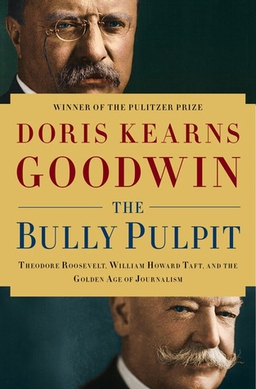The Bully Pulpit (book) facts for kids
 |
|
| Author | Doris Kearns Goodwin |
|---|---|
| Country | United States |
| Language | English |
| Published | November 5, 2013 by Simon & Schuster |
The Bully Pulpit: Theodore Roosevelt, William Howard Taft, and the Golden Age of Journalism is an exciting history book by Doris Kearns Goodwin. It was published in November 2013 by Simon & Schuster. This book is about the special friendship and later rivalry between two important United States presidents, Theodore Roosevelt and William Howard Taft. It also explores how brave journalists, called "muckrakers," helped change public opinion during a time called the Progressive Era. When the book came out, people loved it for its great research and how easy it was to read. It even won several awards!
Contents
About the Book's Creation
How the Author Wrote It
The Bully Pulpit is the seventh book written by Doris Kearns Goodwin. She spent seven years doing a lot of research to write it. Goodwin first wanted to write only about the Progressive Era and Theodore Roosevelt. However, as she researched, she found that William Howard Taft was "far more sympathetic if flawed" than she first thought. This discovery made her decide to focus the book on the changing relationship between Roosevelt and Taft.
What's Inside the Book
Exploring the Progressive Era
The book takes readers back to the Progressive Era, a time when the United States went through big changes around the start of the 1900s. It focuses on the close friendship, which later turned into a rivalry, between Theodore Roosevelt and William Howard Taft. Their wives, Edith Roosevelt and Nellie Taft, are also important characters in the story.
The Power of Investigative Journalism
At the same time, the book tells the story of a group of amazing writers from McClure's Magazine. These journalists, like Ida Tarbell and Lincoln Steffens, were known for their "investigative journalism." This means they dug deep to find out the truth about powerful companies, called "trusts," and how they sometimes used their power unfairly. Their articles helped shape what people thought and felt about important issues. The book also helps us understand how America was seen back then, which was very different from how we see it today.

